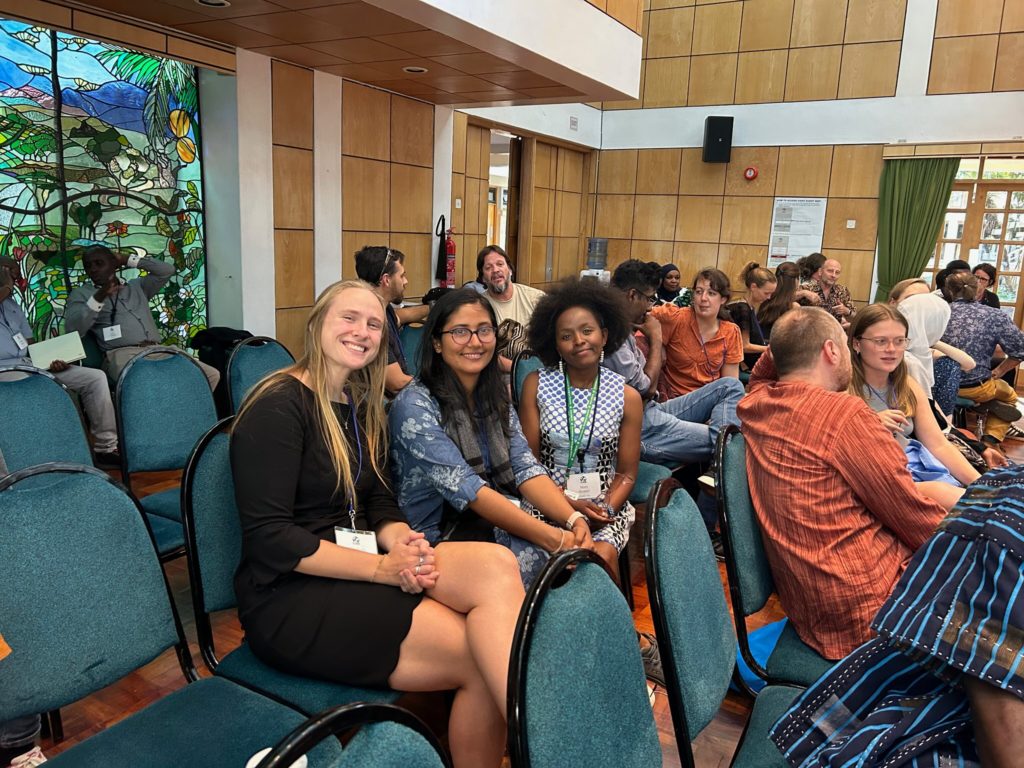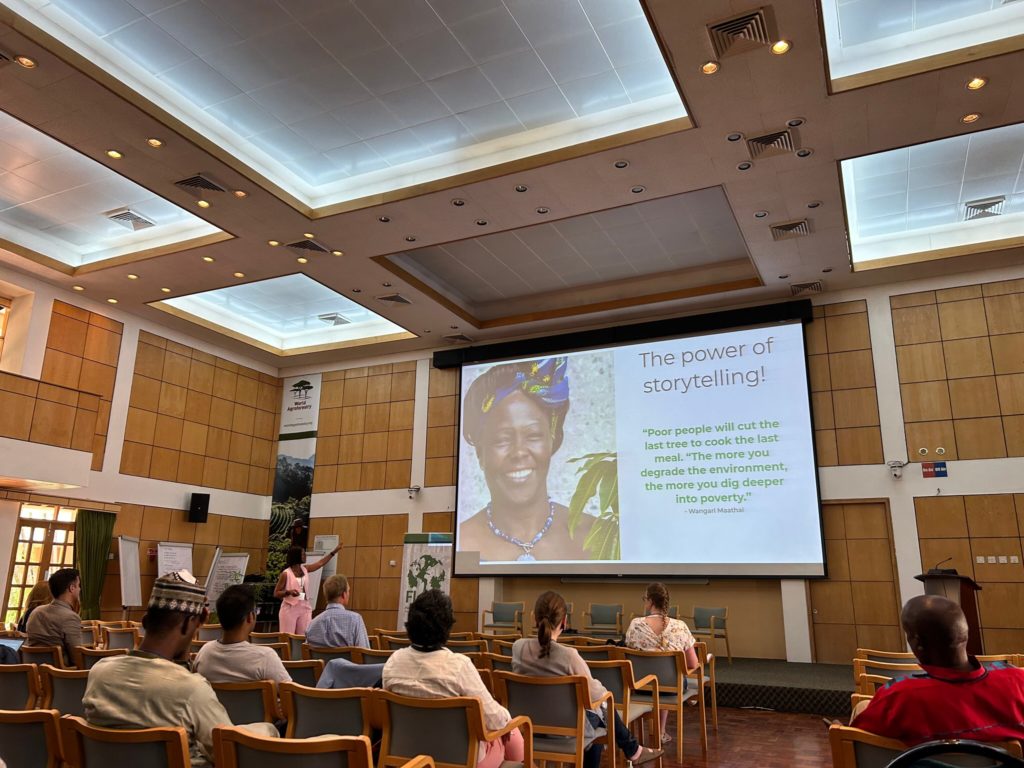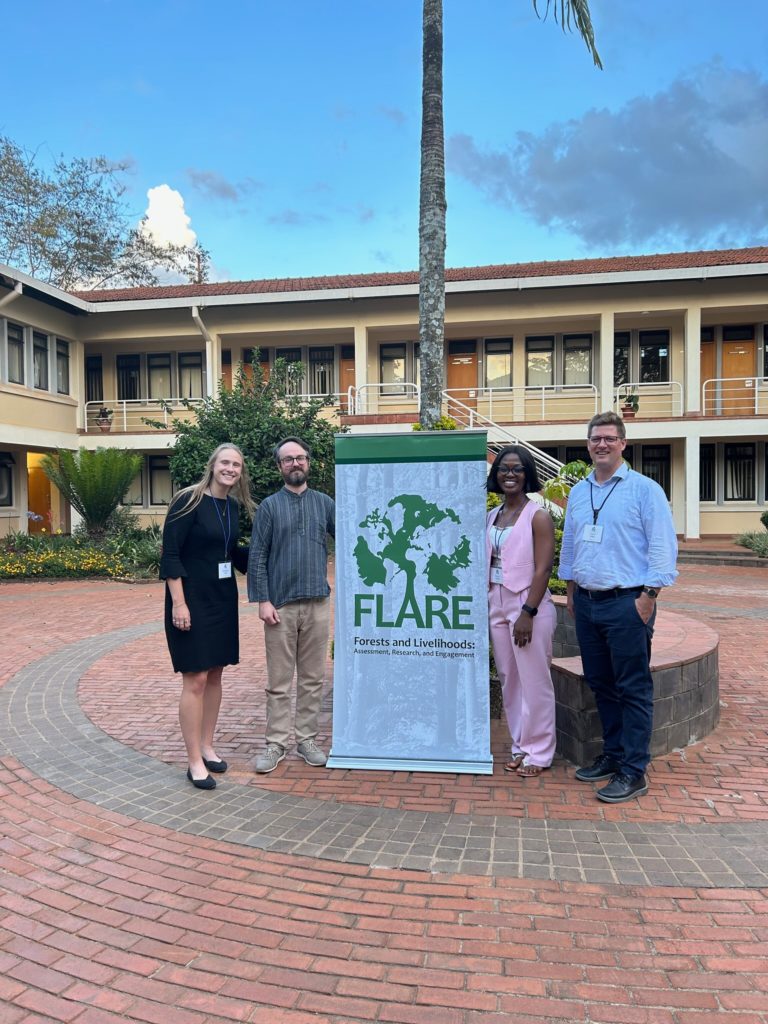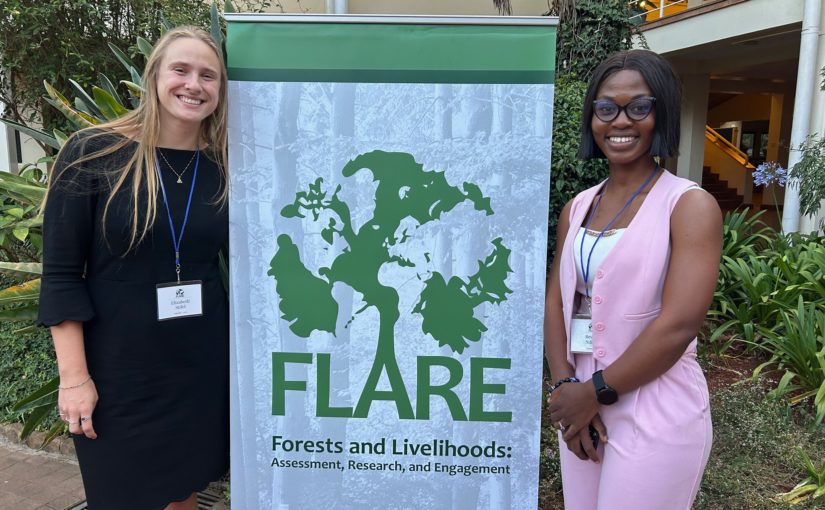By Lizzie Stifel
Exploring the interconnectedness of nature is one facet of classroom learning, but the reality of this importance emerges when you find yourself surrounded by experts dedicated to unraveling and rekindling the profound relationship between our environment and humanity, which has been strained by extensive degradation.
Last week I traveled to Nairobi to attend the Forests and Livelihoods: Assessment, Research, and Engagement (FLARE) conference. This experience allowed me to showcase my research on the impact of trees in farmlands and forests on the well-being of households in Ethiopia. As someone relatively new to research, this event helped me discover a new perspective: the need to embrace holistic and naturalistic approaches that can rejuvenate both our forests and livelihoods—two realms that should complement one another.

Lizzie Stifel (left) with new friends at the annual FLARE conference in Nairobi.
In talking with others, attending presentations, and engaging in deep introspection during the conference, I realized that many existing solutions often address only single issues and are unable to withstand the intricacies of our interconnected environment. Holistic solutions, conversely, call for a loving embrace of all living entities and a pragmatic outlook.
What do holistic solutions look like?
Holistic solutions, first and foremost, require the interconnectedness associated with love. During the conference’s opening ceremonies, I had a great conversation with Andrea Vasquez Fernandez, a PhD student and a descendant of the Quechua Indigenous people from the Andes. She was among the first friends I made, and our conversation set the tone for my conference experience, compelling me to reevaluate my background in political science. Andrea, having transitioned from a career in forest engineering to focus on the social dynamics within Indigenous groups, encouraged me to reconsider the human aspect of holistic solutions. She asserted that love and respect formed the foundation for fruitful cooperation within the Indigenous communities she worked with, even when differing viewpoints emerged. Often, our policies prioritize economic and social ramifications, while neglecting love for one another and the environment.

Notre Dame master of global affairs student Beverly Ndifoin presents a session on environmental storytelling at the FLARE conference in Nairobi.
Biodiversity offsetting
Holistic solutions extend their consideration to all creatures. Despite my passion for forestry and environmental policy solutions, the FLARE conference introduced to me the concept of biodiversity offsetting. Carbon offsetting is a familiar term: when individuals or companies invest in environmental projects to counterbalance the carbon emissions they produce or the deforestation they cause. While this practice does capture carbon, it inadvertently disrupts the existing ecosystem, rendering the land barren of the diverse plant and animal life essential for a thriving environment. Consequently, our approach must encompass not just the human-environment relationship but also the creation and preservation of complete ecosystems, rather than merely administering quick fixes to mitigate our destructive actions.

Ultimately, holistic solutions must be practical. The primary theme of the conference centered on the nexus between forests and livelihoods, with a special focus this year on the practical implementation of solutions on the ground. I acquired insights into innovative tools like CommFor, a community-based data collection system, and community networks aimed at strengthening grassroots organizations. I also discovered the Indian “gram sabhas,” wherein communities autonomously determine the most effective approaches to environmental issues. Witnessing these grassroots contributions and hearing from experts as they contemplated how to integrate their work into tangible solutions was enlightening. In my conversation with a fellow attendee, I learned that research, although crucial, is the simpler part, while community work demands the most effort and yields the most significant and enduring changes.
In conclusion, my time at the FLARE conference has fundamentally reshaped my perspective on research. As I continue to advance my work, I intend to remain committed to considering the interconnectedness of nature and humans, as well as the critical importance of offering holistic policy recommendations and initiatives that foster the well-being of forests and household livelihoods.
Lizzie Stifel is a senior political science and global affairs major in the Keough School of Global Affairs at the University of Notre Dame. She is a student leader in the Kellogg Developing Researchers Program, which funded her travel to the Nairobi conference.
Top photo: Author Lizzie Stifel (left) with master of global affairs student Beverly Ndifoin at the annual FLARE conference on forests and livelihoods in Nairobi, Kenya.

